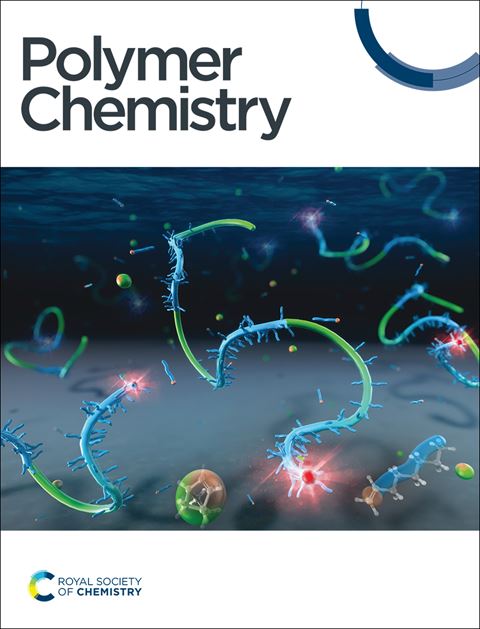Photobase-catalyzed thiol–ene click chemistry for light-based additive manufacturing†
IF 4.1
2区 化学
Q2 POLYMER SCIENCE
引用次数: 0
Abstract
Photo-mediated additive manufacturing from liquid resins (vat photopolymerization) is a rapidly growing field that will enable a new generation of electronic devices, sensors, and soft robotics. Radical-based polymerization remains the standard for photo-curing resins during the printing process due to its fast polymerization kinetics and the range of available photoinitiators. Comparatively, there are fewer examples of non-radical chemical reactions for vat photopolymerization, despite the potential for expanding the range of functional materials and devices. Herein, we demonstrate ionic liquid resins for vat photopolymerization that utilize photo-base generators (PBGs) to catalyze thiol-Michael additions as the network forming reaction. The ionic liquid increased the rate of curing, while also introducing ionic conductivity to the printed structures. Among the PBGs explored, 2-(2-nitrophenyl)-propyloxycarbonyl tetramethylguanidine (NPPOC-TMG) was the most effective for the vat photopolymerization process wherein 250 μm features were successfully printed. Lastly, we compared the mechanical properties of the PBG catalyzed thiol-Michael network versus the radical polymerized network. Interestingly, the thiol-Michael network had an overall improvement in ductility compared to the radical initiated resin, since step-growth methodologies afford more defined networks than chain growth. These ionic liquid resins for thiol-Michael additions expand the chemistries available for vat photopolymerization and present opportunities for fabricating devices such as sensors.

光基催化的巯基点击化学用于光基增材制造
液体树脂的光介导增材制造(大桶光聚合)是一个快速发展的领域,将使新一代电子设备、传感器和软机器人成为可能。自由基基聚合由于其快速聚合动力学和光引发剂的范围,在印刷过程中仍然是光固化树脂的标准。相比之下,还原光聚合的非自由基化学反应的例子较少,尽管有可能扩大功能材料和器件的范围。在此,我们展示了用于还原光聚合的离子液体树脂,该树脂利用光碱发生器(PBGs)催化硫醇-迈克尔加成作为网络形成反应。离子液体提高了固化速度,同时也为印刷结构引入了离子导电性。在所探索的PBGs中,2-(2-硝基苯基)-丙基氧羰基四甲基胍(nppc - tmg)在还原光聚合工艺中最有效,成功打印了250 μm的特征。最后,我们比较了PBG催化的硫醇-迈克尔网络和自由基聚合网络的力学性能。有趣的是,与自由基引发的树脂相比,巯基-迈克尔网络的延展性总体上有所改善,因为步进生长方法比链式生长提供了更明确的网络。这些用于硫醇-迈克尔添加剂的离子液体树脂扩展了还原光聚合的化学性质,并为制造传感器等设备提供了机会。
本文章由计算机程序翻译,如有差异,请以英文原文为准。
求助全文
约1分钟内获得全文
求助全文
来源期刊

Polymer Chemistry
POLYMER SCIENCE-
CiteScore
8.60
自引率
8.70%
发文量
535
审稿时长
1.7 months
期刊介绍:
Polymer Chemistry welcomes submissions in all areas of polymer science that have a strong focus on macromolecular chemistry. Manuscripts may cover a broad range of fields, yet no direct application focus is required.
 求助内容:
求助内容: 应助结果提醒方式:
应助结果提醒方式:


